Rome Ridge – Arthur’s Pass mega classic leading to Mt. Rolleston – no touring equipment is even required.
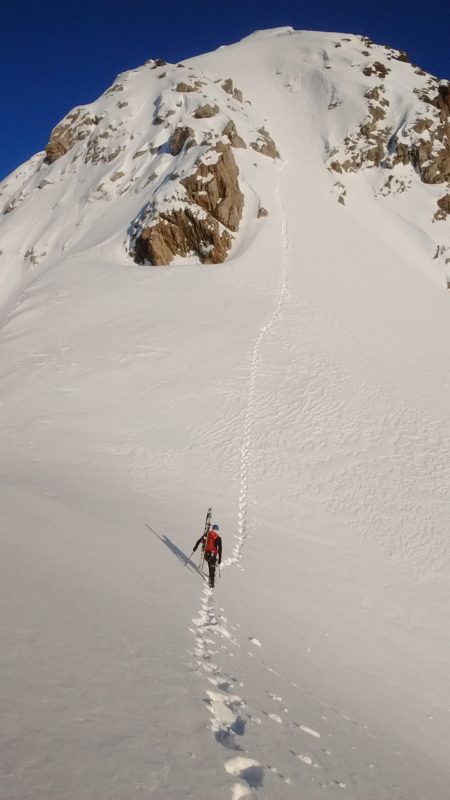
The climb is described in the Arthur’s Pass climbing guidebook by Graeme Kates (https://climbnz.org.nz/nz/si/main-divide-of-the-southern-alps/mt-rolleston/low-pk). This write-up aims to serve as an add-on for people who want to ski tour it.
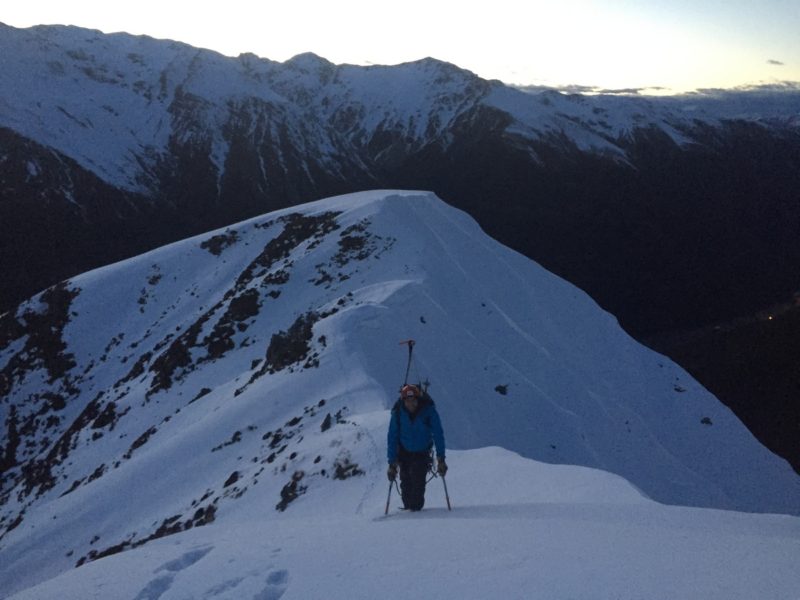
An early start should take you to the little car park just at the base of Coral Track. Be quick or find yourself without a parking spot on a busy day. Coral Track is well formed and should be easy also with ski boots on. Once on the ridge, it is straight forward – you follow the ridge until it stops going up – and yes, this is the summit.
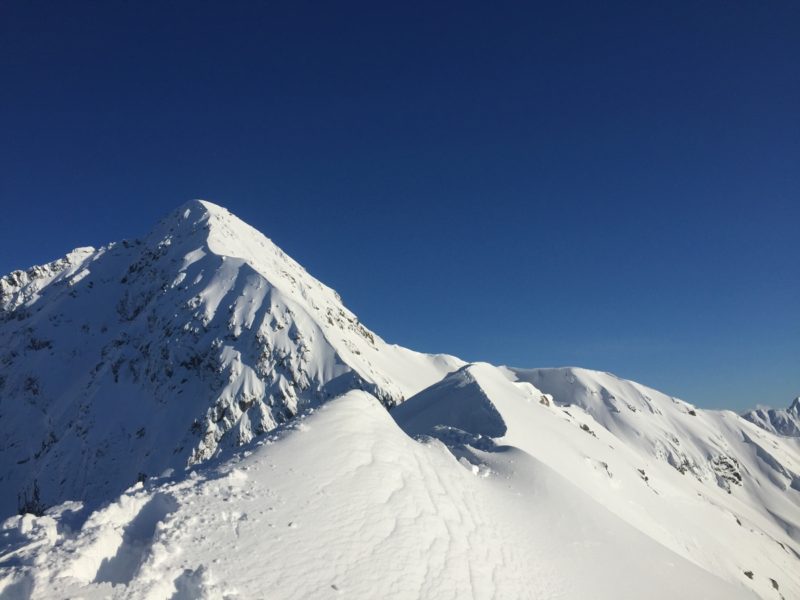
The couple of cruxes on the ridge may or may not pose a problem – depending on snow conditions. More snow generally makes the ridge significantly easier. Is it probably possible to skin some parts of the ridge, however making a transition from boot crampons to skis can take a while, and a few of those transitions will be required. We opted to just boot pack all the way up. In other words – if you decide to leave your skins at home it is probably fine.
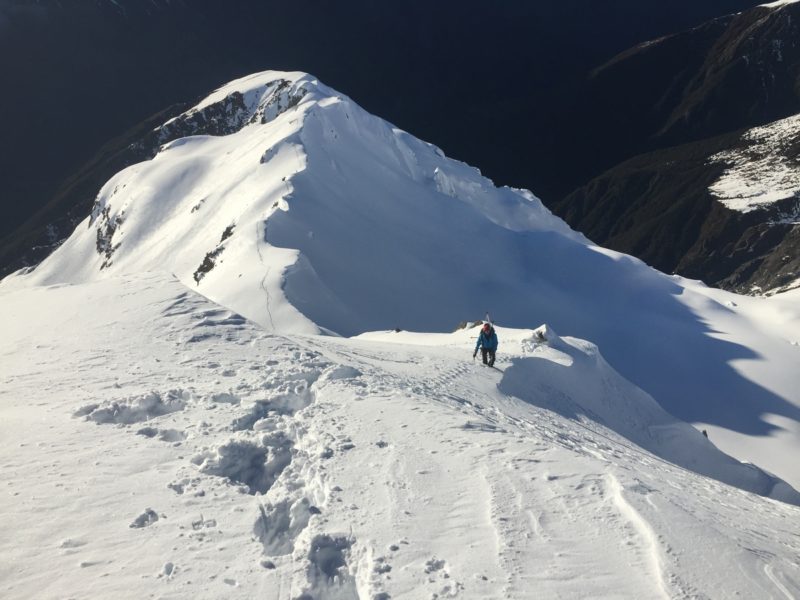
Once the low peak of Mt. Rolleston is reached, you can decide if 1400m of boot packing was enough for you or not. If not, you can attempt high peak, which is visible just over the Crow Glacier.
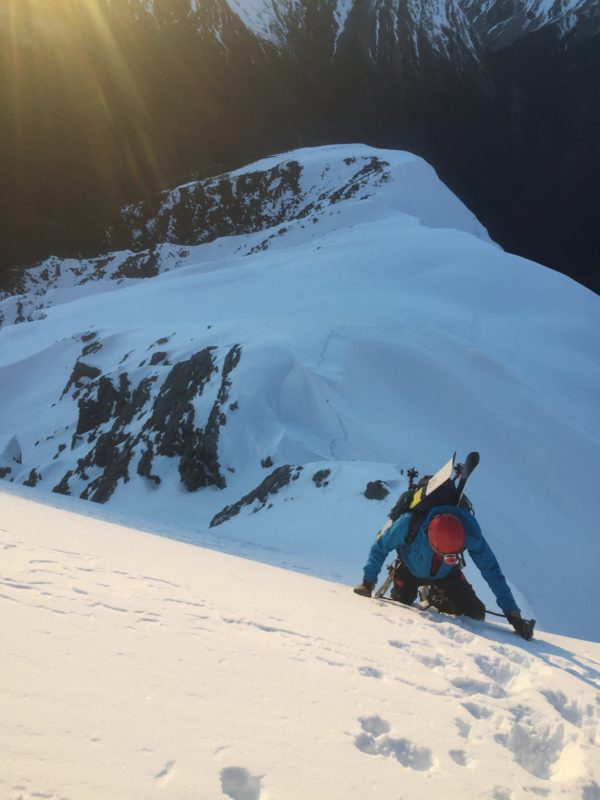
We opted to just ski down. Skiing down, you start on the steep face of the mountain, but you should look for the entry to the Otira slide, which should be obtained easily. If you’re lucky, you should hit the slide around midday for some fantastic spring corn. If not, comfort yourself with the thought that it is still much better to ski down than boot-pack down.
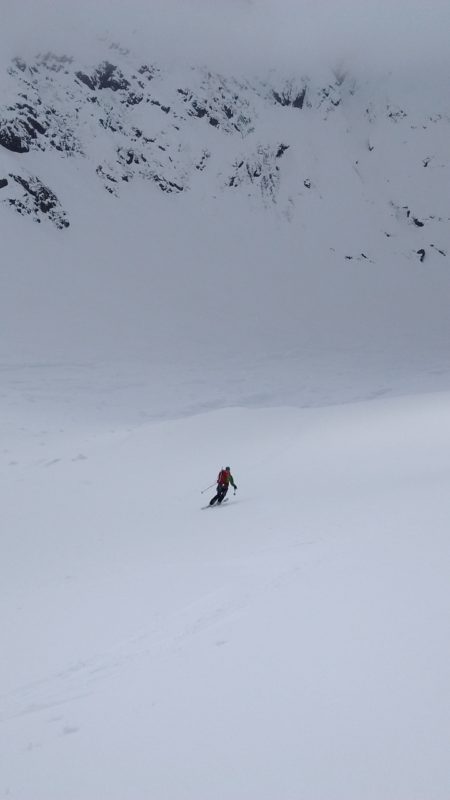
Depending on the snow line, you might be able to ski all the way down to the Otira bridge. Once the snow ends, look for the cairns that will guide you down the valley. From the bridge on wards the track is well formed all the way down the Otira Valley carpark. At the carpark, use the power of the thumb to get back to the car (4km away), or alternatively walk back.
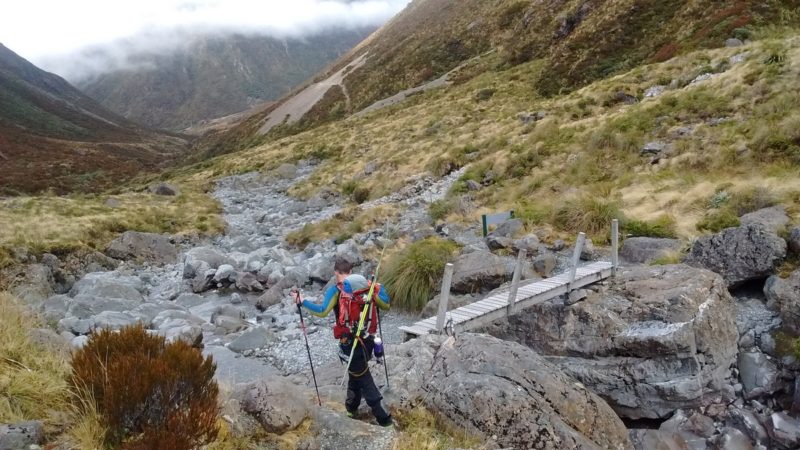
Write-up by Dan Freuhauf & Karl Greasley – September 2018
Otira slide via Rome Ridge (Mt Rolleston) TRIP REPORT 27.7.2019
While visiting my girlfriend Suzy (an escaped Kiwi working in Melbourne) in New Zealand, we climbed the low peak of Mt Rolleston via Rome Ridge. It’s an ultraclassic route of Southern Alps that’s been on Suzy’s radar for ages, and with a forecast for beautiful weather, we rolled into Arthur’s Pass in high hopes.
However, word-of-mouth at the Arthur’s Pass NZAC hut that evening was that the avy conditions were safe and the climbing was good, but skiing conditions were unpleasantly icy. Given that, Suzy decided to forgo skis, but I decided I’d give skiing the Otira slide the ol’ college try and strapped my skis on at our 3am start.
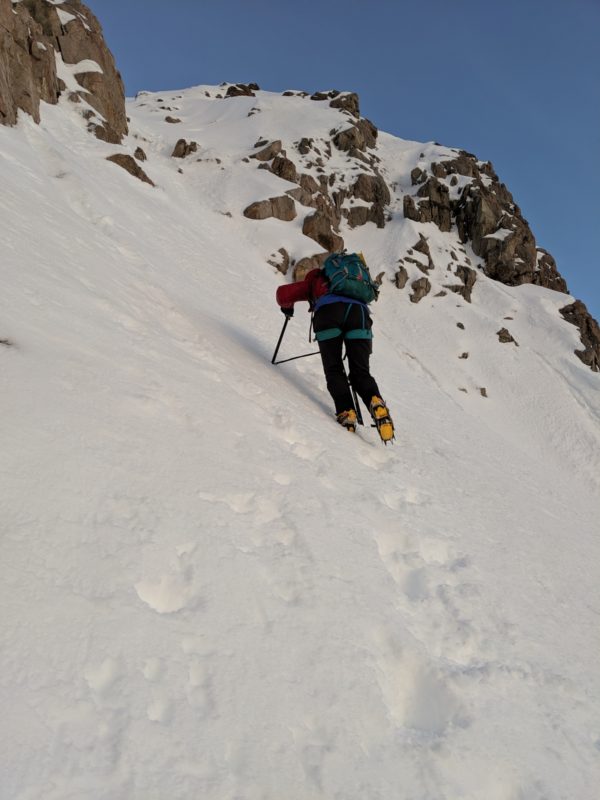
As it was a beautiful Saturday with low-to-moderate avalanche hazard, we were soon part of a large and merry conga line of climbers. I was a little surprised, and increasingly doubtful of my judgement, to find that I was the only person among the several dozen climbers we met who was carrying skis! There was one dude with a parasail wing in his pack, though, but 40 kmph winds shut him down.
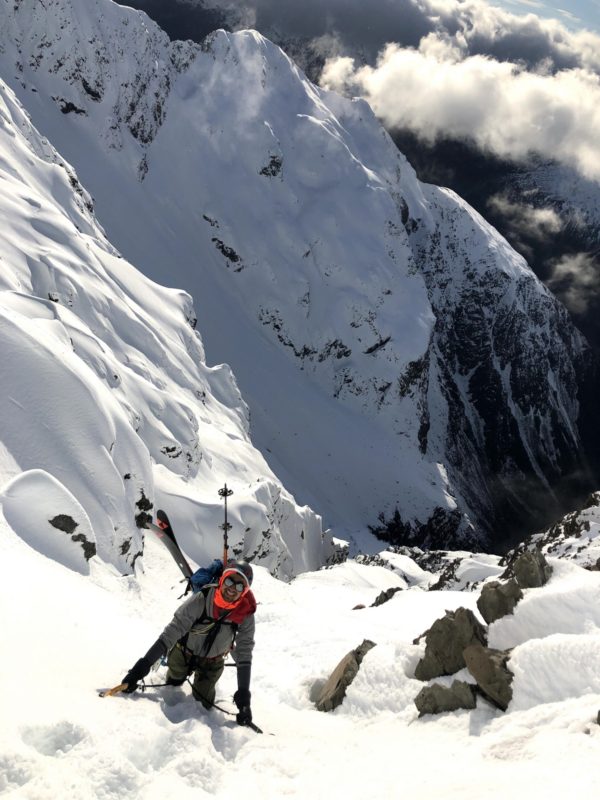
We approached The Gap, the grade II crux, with some trepidation, having read some melodramatic internet accounts of hair-raising, unprotectable leads of this steep snow and rock section. Perhaps it was the snow conditions (still firm after a night’s refreeze), or the perfect boot ladder that had been bashed in by what appeared to be half the climbers in the South Island, but we found The Gap to be quite chill, and easily soloed. There was, however, no denying its beauty and exposure!
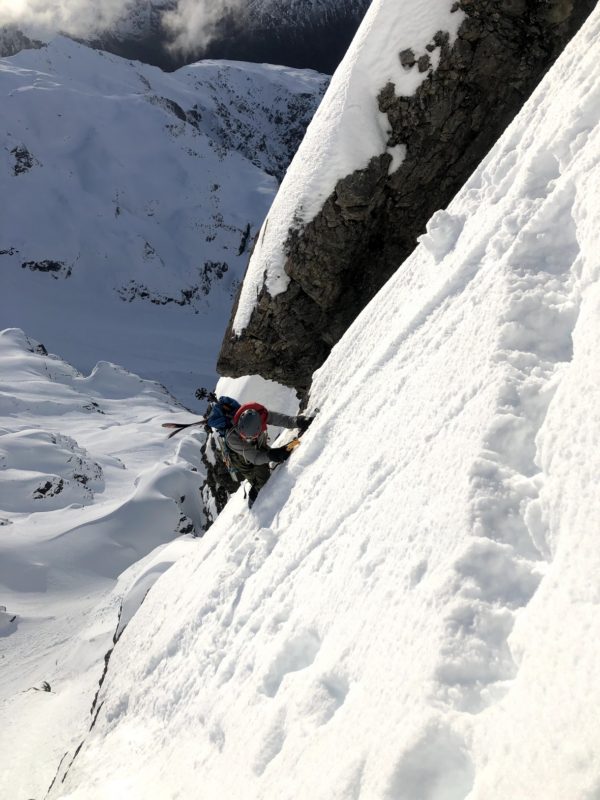
The climb from the top of The Gap to the low summit of Rolleston was pure delight. Good snowpack, beautiful exposure, the glistening peaks of the Southern Alps for as far as the eye could see in every direction.
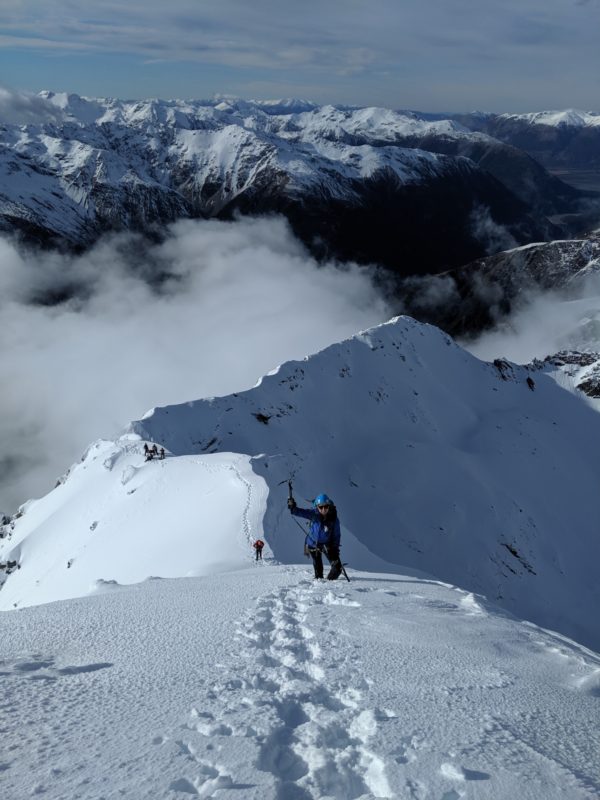
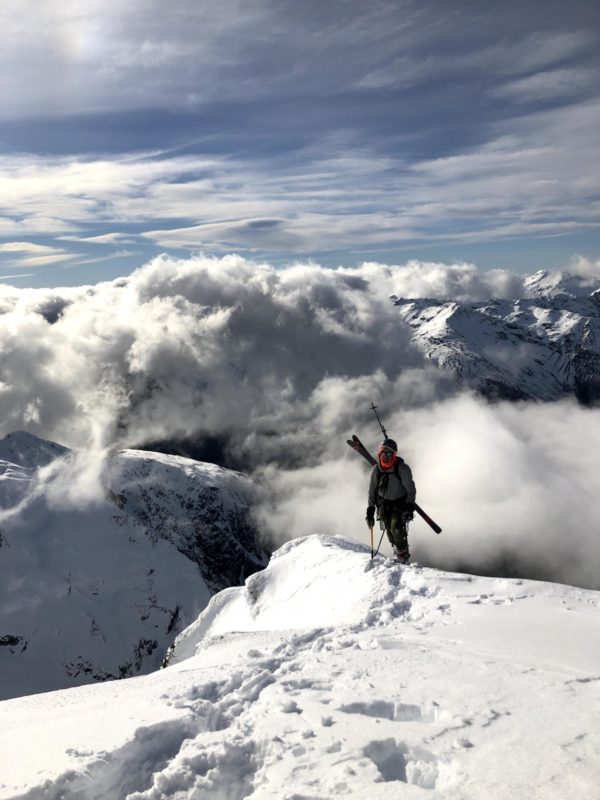
Unfortunately, we got COMPLETELY socked in by some quick moving clouds right as we topped out the low peak. Since the descent route was different that the route we climbed, I had no idea what I was getting myself into.
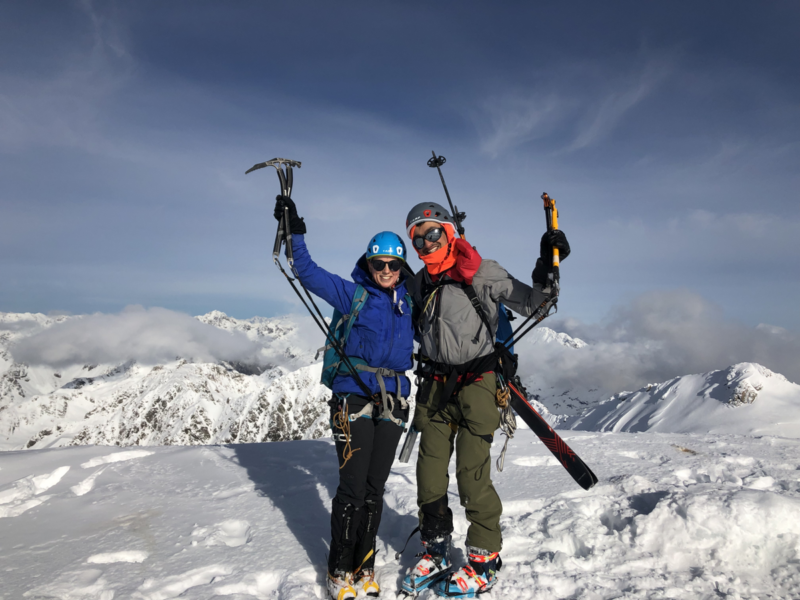
I wrestled with my conscience for a while before deciding that I was unwilling to risk a blind descent of a ~45 degree face (broken up by cliff bands) in 1-meter visibility. I grudgingly down-climbed the first 150 or so meters. Eventually, I found myself at the top of a tasty 35-40 degree chute, and was graced by a brief lifting of the clouds, enough for me to pick out a line without any cliff bands. It was the moment I’d been waiting for. I clicked into my skis.
I was still pretty gripped through this pitch, with visibility once again quickly squashed, firm snow, and enough exposed rocks around to make a fall very risky. Through clouds, I could hear (but not see) the skier’s left side of the chute being strafed by rollerballs, which was adding to my stress. Feeling spooked, I made a few conservative jump turns at the top, but my edges were biting well and I soon loosened up enough to rip some big frickin’ GS turns as the chute opened up.
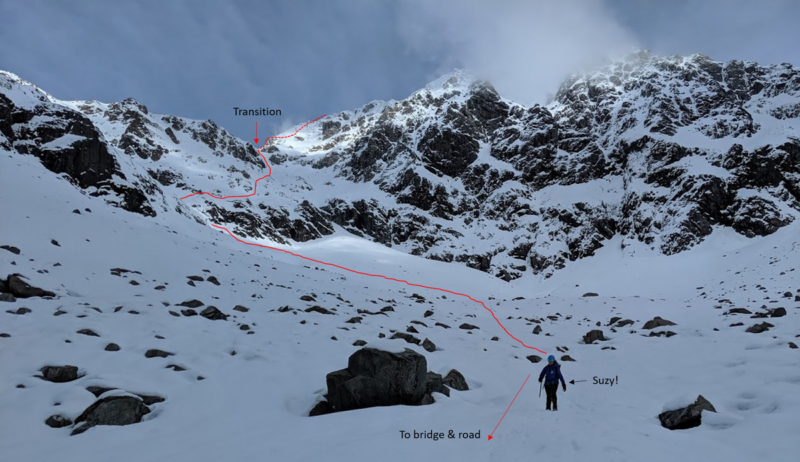
Once out of the chute and below the clouds, the skiing became absolutely fantastic. The snow had corned up beautifully and there were many features to play around on, including about 50 meters of a natural half-pipe that I was able to style in front of a pair of jealous climbers. I had a good kilometer or two of happy times before the snow fizzled out a couple hundred feet from the bridge.
Suzy and I were able to hitch back to our car and went in for a beer and snack at the Wobbly Kea pub with a good fraction of the folks on Mt Rolleston that day.
While I think the decision to downclimb the first few hundred meters was the right one, the top part of whatever line I groped my way down in the fog certainly would have been manageable skiing on a clear day. With exception one narrow choke above the chute, following the ridge and staying to skier’s right avoids most of the cliff bands, although even a small slip (or sluff…) would be Bad News.
All in all, Rome Ridge lived up to the hype and did not disappoint! I would like to go back and hit that top section some day, as well as the tasty looking Crow Face… guess I’ll have to find a way to move to the South Island!
Nitty gritty:
Timing & distance: July 27, 2019, fairly low snow conditions. Took us about 6 hrs 30 min at a reasonable pace from Coral trailhead to the summit of the low peak. 1400 m elevation gain, something like 4-5 km on the ascent and closer to 5-6 km on the descent. There are a few short sections of 50+ degree snow climbing prior to the Gap.
Skis: I used Fischer Ranger 90s with Marker Kingpin 13 bindings, Fischer Transalp boots. I did not find it necessary to lock out my bindings for the descent, although I did ski with an ice ax tied to my pole.
Climbing gear: I used both a piolet and a technical tool, although a piolet + self arrest ski pole (Whippet) or even just a single piolet and confidence would have been enough. I used burly technical ice climbing crampons with vertical front points, but they were totally overkill. Aluminium 10-point ski-mo crampons would have been plenty.
Pro: Suzy and I each carried a picket. We also had a handful of nuts and long slings. We ended up not protecting anything, but the 2 pickets would have worked nicely for The Gap if we had decided to pitch it out. Definitely no need for screws and probably no need for nuts, at least in the conditions we had.
Other: I didn’t bother with skins or ski crampons, and wouldn’t recommend it unless ascending from the Otira slide direction. Approach shoes, by contrast, are highly recommended, especially if ascending the Coral track/Rome Ridge side!
Avilash Cramer is a PhD student in the US. Originally from Oregon, he prepared himself for this 2-week trip to NZ by spending the last 4 winters shredding ice in the Vermont and New Hampshire backcountry. He thinks the Southern Alps are pretty sweet.
You must be logged in to post a comment.